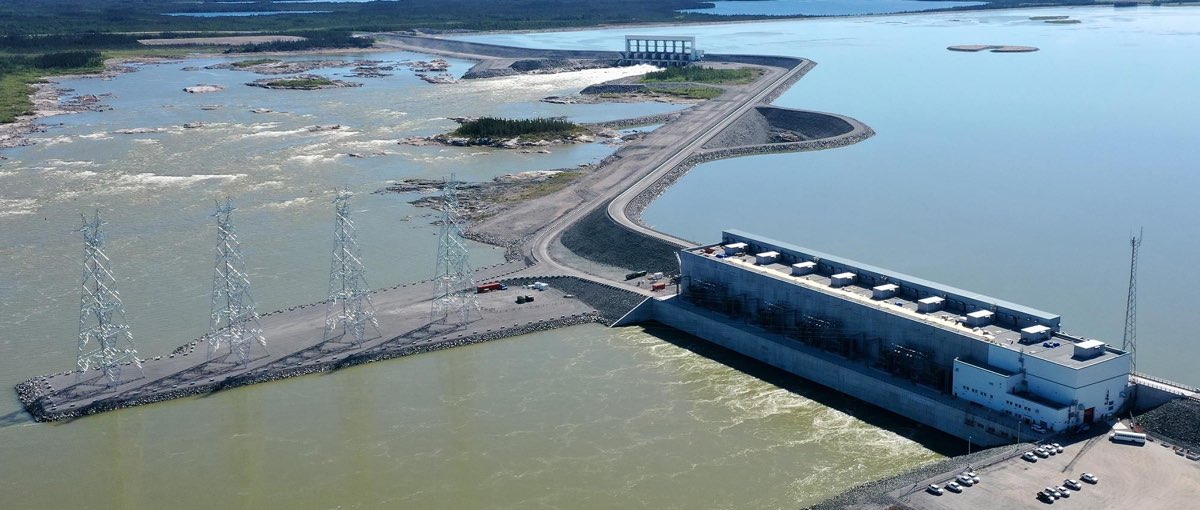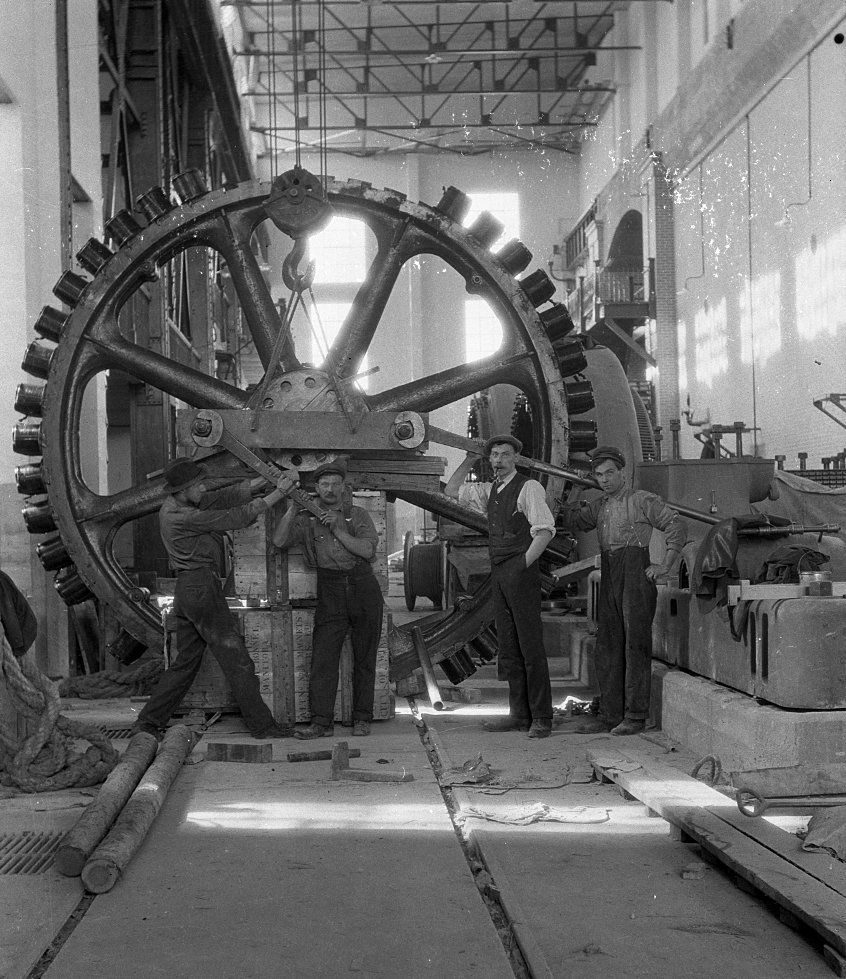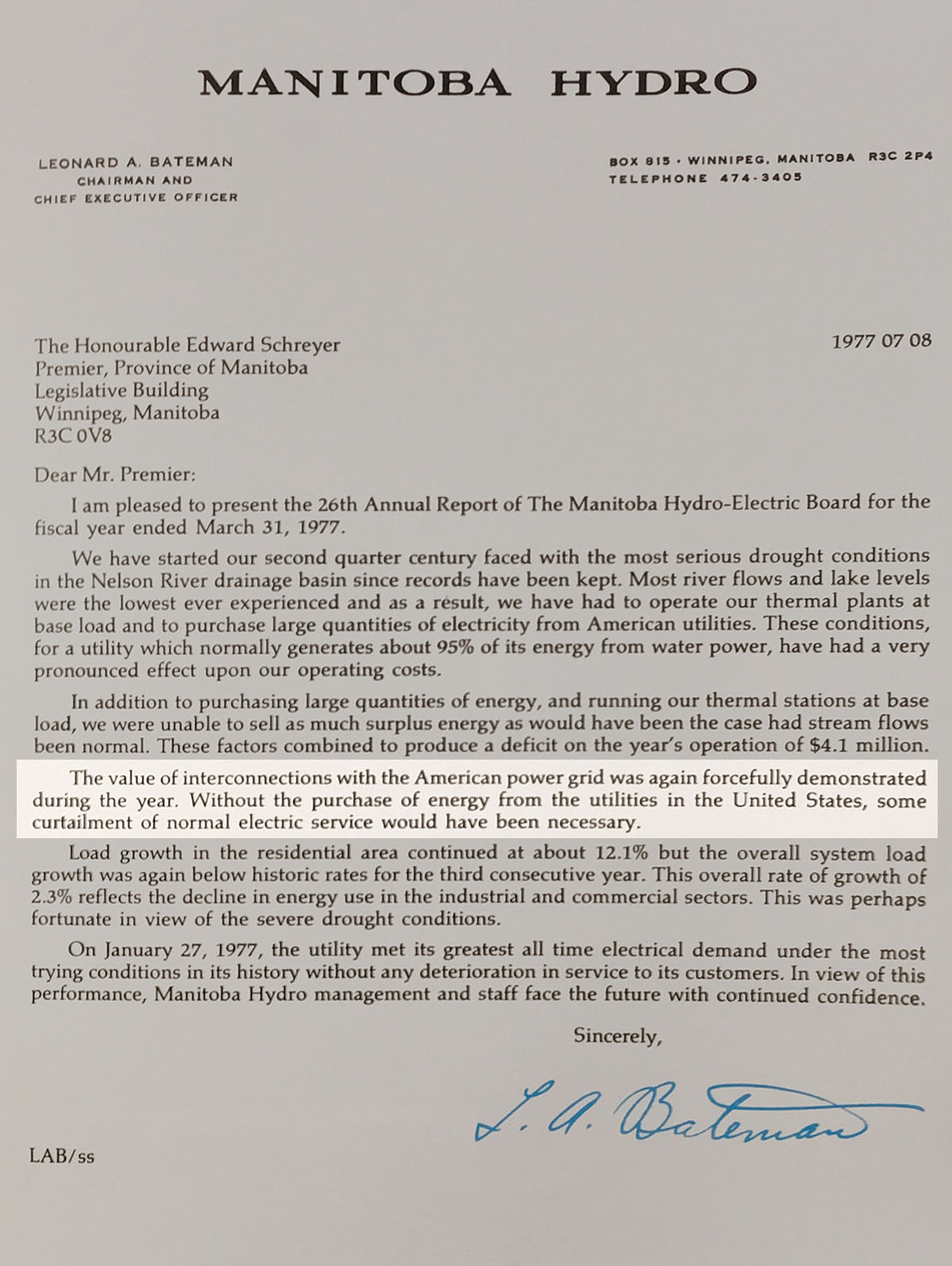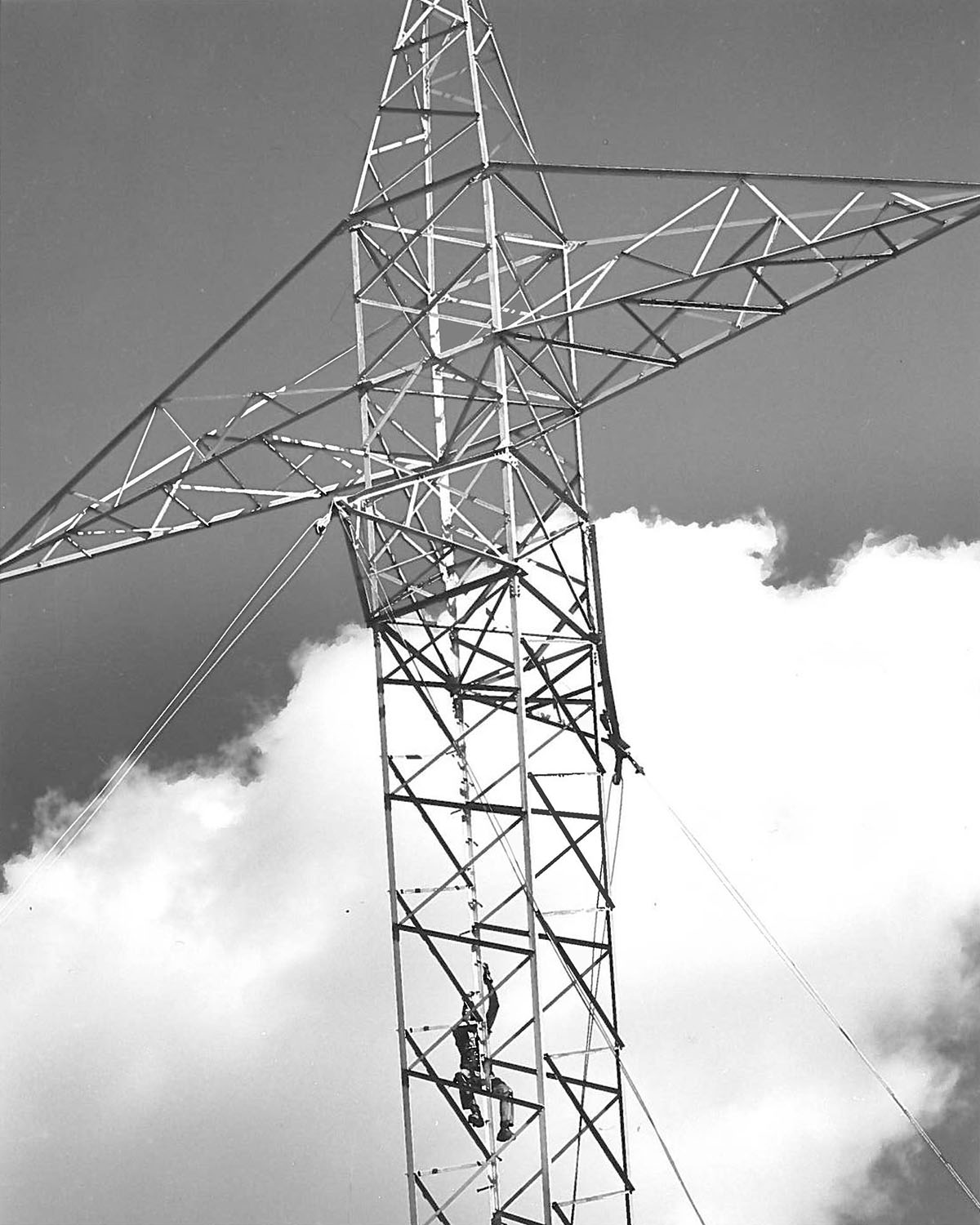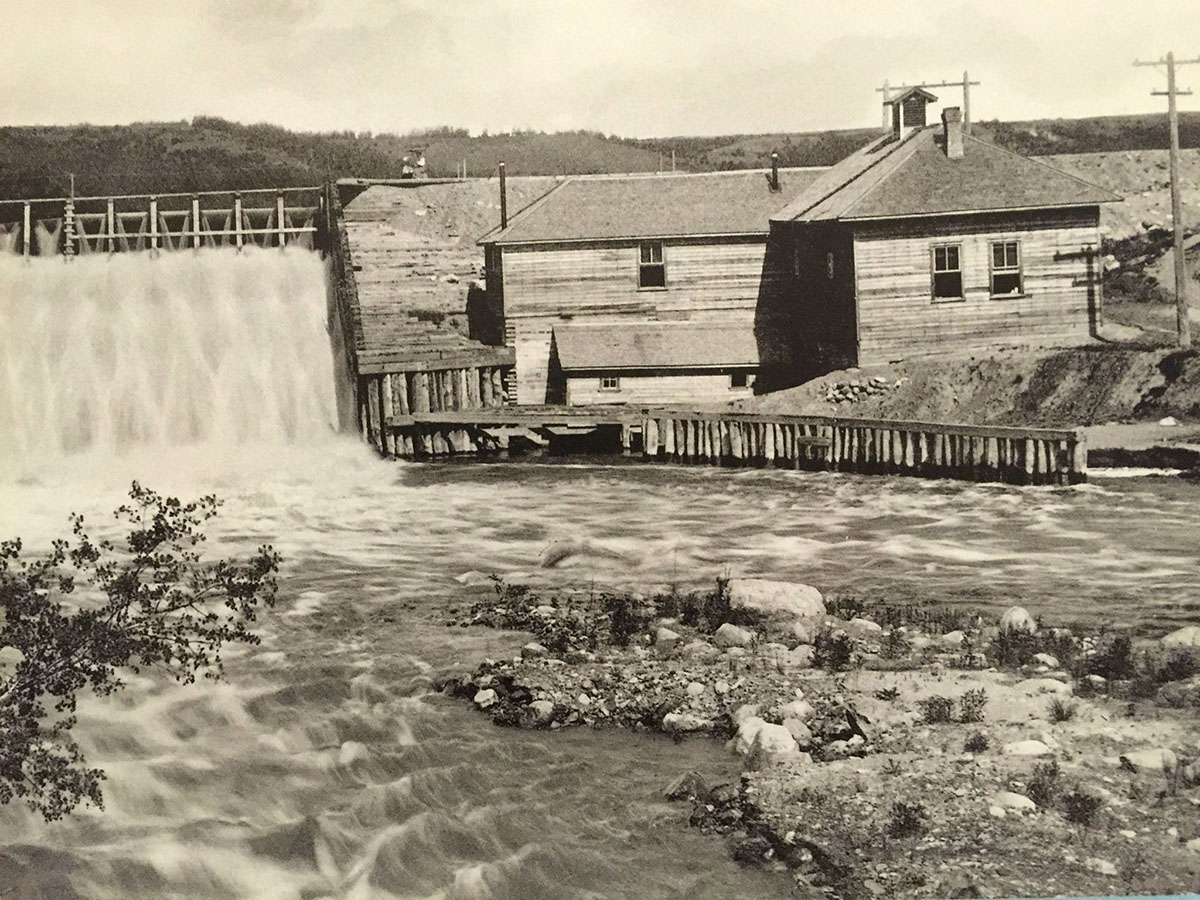Five decades of Manitoba hydropower
Interconnections aren’t an afterthought. They’re a key part of Manitoba Hydro’s business plan.
Since what was then the Dominion of Canada issued Manitoba’s licence to build the first U.S. interconnection in 1930, the potential for something greater was there. The original, 33-kV line from Gretna, Manitoba to the North Dakota border was less than a mile long. It supplied the Interstate Power Company which served North Dakota and Minnesota.
Little did we know, the 20th century would see connections between our two countries get a whole lot stronger.
Over 50 years ago Manitoba Hydro recognized we were sitting on a precious resource: the untapped energy of our rivers. From the Winnipeg River in the south to the Nelson River in the north, our province is blessed with large rivers – and hydroelectric potential – flowing north into Hudson Bay.
Armed with precedent, great vision and more coursing energy than we could use, Leonard Bateman, Manitoba Hydro’s chairman at that time, wondered: the river keeps flowing past the Canada-US border. Why couldn’t more of our hydropower flow across the border too?
To that end, back in 1964, far-sighted individuals from Minnesota Power and Light, Manitoba Hydro and other utilities met with a singular vision: connecting Manitoba to the United States, ensuring we could support and share with each other for decades to come, improving reliability and energy security for customers on both sides of the border.
Eventually those 1964 discussions led to the first major interconnection between Manitoba Hydro and Minnesota Power and Light. That interconnection was the 230-kV Ridgeway to Moranville line, completed in 1976.
Manitoba Hydro immediately saw the value of that project. Just after that line came into service, Manitoba experienced an extreme drought. Were it not for that new interconnection with Minnesota Power and Light, our domestic customers would have experienced severe shortages of power. Len Bateman noted as much in his 1977 annual report letter.
Since then, interconnections have provided enhanced reliability and other benefits to customers across the region. It’s for these reasons Manitoba Hydro continues to pursue interconnections with utilities in both Canada and the United States.
As of January 2019, we have one 500-kV and three 230-kV interconnections with North Dakota and Minnesota, along with multiple high-voltage transmission connections within Canada. These include three 230-kV and two 115-kV connections with Saskatchewan to the west, and two 230-kV connections with Ontario to the east.
Though the value of Manitoba Hydro’s assets now tops $22 billion and our supply approaches 5,700 MW, we know how important it is to safeguard and backstop any source of supply through relationships with other utilities. The more connections we have, the greater the benefit to utility customers at each end of the line.
That’s why our pursuit of cross-border transmission hasn’t slowed down. Today, we are working with Minnesota Power to complete the Great Northern Transmission Line / Manitoba-Minnesota Transmission Project, a 500-kV corridor through which we can supply reliable renewable energy to Minnesota Power customers, while also doubling our import capability into Manitoba. Manitoba Hydro’s dispatchable hydropower will strengthen Minnesota Power’s system reliability and help supply industrial load growth in Minnesota’s Iron Range, while backstopping more intermittent domestic renewables such as solar and wind.
The cost benefits are substantial too — a 2013 MISO report showed new hydropower in Manitoba and enhanced transmission between Manitoba and the MISO region would help save U.S. customers $430 million annually by 2027.
Cross-border transmission and interconnections continue to help us provide the power our customers need, fueling economies in the MISO-region and keeping customers warm and well-lit on both sides of the border.
We’ve been in this together for decades, and will be for decades to come. As Len Bateman and executives from US utilities realized in the 1960s, we are better together.
